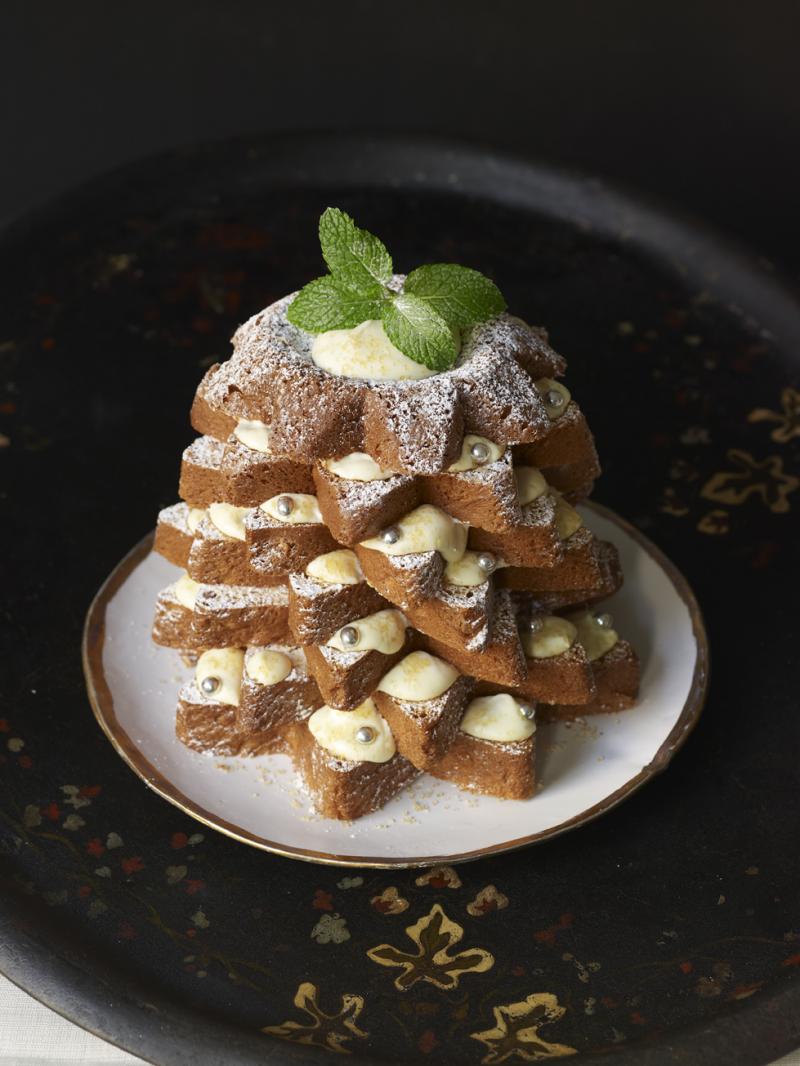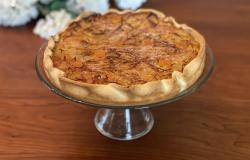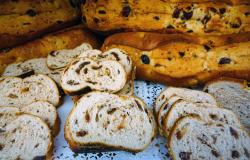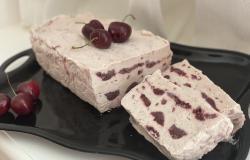Pandoro Christmas Tree Cake

Pandoro, a tall star-shaped cake, has a delicious eggy brioche-like soft center, with a lovely vanilla-butter aroma. In Italy, pandoro is often served cut in horizontal slices that are restacked to look like a Christmas tree. It even comes boxed with a packet of confectioners’ sugar to sprinkle on top.
Pandoro, in its present-day version, first appeared in late 19th-century Verona. There are two different legends about its origin. The first dates pandoro's birth to the Renaissance and to the custom of Venetian bakers dusting gold leaf on top cone-shaped cakes called pan de oro, “bread of gold” for their wealthy customers. The second legend attributes a humbler origin to pandoro, suggesting that it might have descended from a star-shaped homemade cake, nadalin, enjoyed by Verona’s farmers during Christmas.
In this recipe pandoro is taken to yet another level with each layer spread with mascarpone custard and decorated with mint leaves and candied cherries. However, there are lots of other ways to serve this versatile holiday cake! You can spread pandoro with anything spreadable like ice cream, whipped cream, icing, pastry cream, or even zabaglione. And just like a gingerbread house, you can decorate it with anything festive including tiny candies, sprinkles or crushed candy canes.
Thanks to the natural yeast used in making pandoro, it lasts more than 6 months without refrigeration. You can substitue pandoro in any recipes like zuppa inglese, tiramisù or zuccotto that call for pan di Spagna or savoiardi lady finger cookies.
Pandoro is sold in a distinctive lampshade-shaped box that children in Italy often play with as a toy hat. In America real estate agents have been known to advise sellers to simmer apples and cinnamon in the kitchen to entice buyers. In Italy, they suggest setting pandoro on the radiator for its intoxicating buttery aroma.
Pink for Christmas? Walk through charming Verona, the home of Romeo and Juliet, during the Christmas season and you’ll see pretty violet and pink colored boxes of pandoro displayed throughout the town in all kinds of unlikely shop windows including bookstores, clothing emporiums, and gift boutiques. Were the delicate colors of the package chosen in honor of Juliet? Actually, no.
The founder of the Bauli company, Ruggero Bauli, had three older sons, working in different parts of the business, two in production and one as a lawyer. Out of fairness he assigned to his only daughter, then just a youngster, the critical task of deciding pandoro’s package colors.
In a saucepan combine 1/4 cup water with 1/4 cup of the sugar and bring to a boil. Remove from the heat and stir in 1/4 cup of the Cointreu or rum. Reserve.
In a standing mixer combine the yolks and the remaining 1/2 cup of sugar and beat for 5 minutes until light yellow and fluffy. Beat in the remaining 2 tablespoons Cointreau or rum, and fold in the mascarpone.
In a separate bowl, beat the heavy cream until peaks form. Fold the mascarpone cream into the whipped cream.
Carefully, so as not to break the points, slice the pandoro horizontally into 6 slices. Brush the outsides of the slices, the golden colored baked section, with the reserved Cointreau syrup.
Place the largest pandoro slice onto a serving platter and spread with some of the mascarpone mixture.
Cover with the next largest slice, angling it so that the points of the star tips don’t line up. Spread with some of the mascarpone mixture and repeat with the remaining layers, finishing with a dollop of mascarpone on top.
Decorate the points with candied cherries and mint leaves or candies. Sprinkle the entire cake with confectioners’ sugar.






